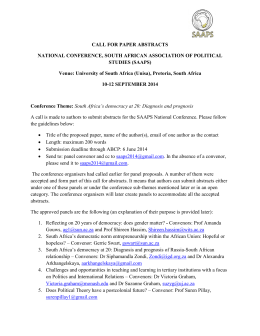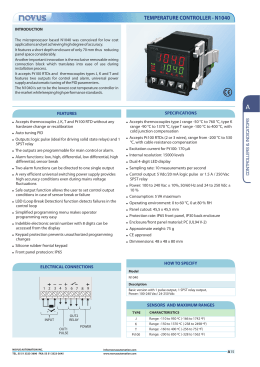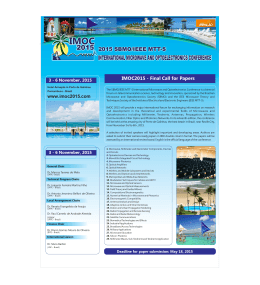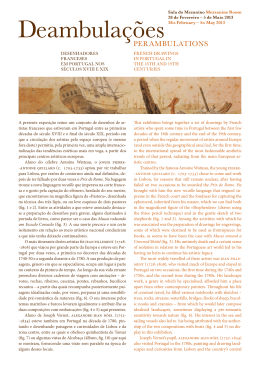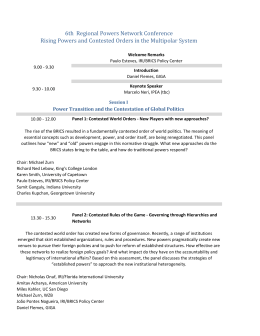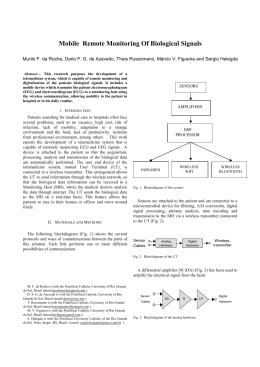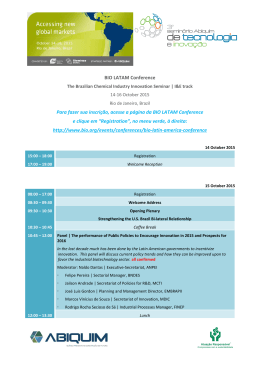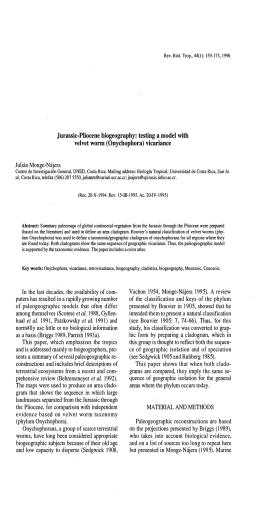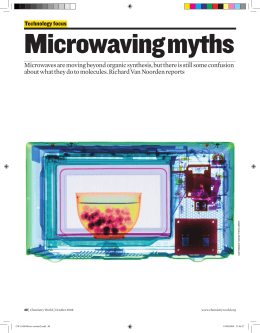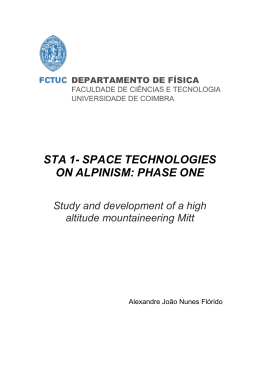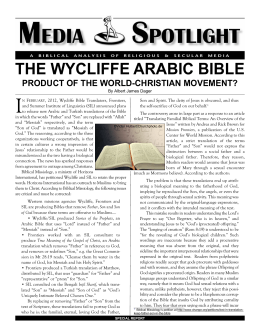Portuguese Practice of Introducing Traffic Signals for Speed Control Instituto de Infra-Estruturas Rodoviárias, I.P. March 2011 1 Portuguese practice of introducing traffic signals for speed control The most common criteria adopted in the implementation of traffic signals for speed control in Portugal are as follow: 1) Traffic signals used to control driver’s speed should be in general associated to intersections of roads and / or pedestrian crossings. However, if justified, these signals can be used on other sections of road (where speed is an issue) since the distance to the next intersection of roads or pedestrian crossing, in the direction of traffic, is equal or higher than 25 metres; 2) When the placement of such signals in both directions of traffic is necessary, the referred signals should not be installed in the same section of the road, i.e., the signals for one and the other direction should not be contained in the same plane perpendicular to the carriageway, and should be far apart, at least 30 metres; 3) It is not allowed to interrupt the circulation of traffic in one direction only, i.e., whenever a signal requires the stop of a vehicle circulating in a particular direction (red light), it simultaneously must also stop the circulation in the other direction (to avoid road users / pedestrians crossing the road with the circulation stopped in only one direction); 4) In addition to the traffic lights placed on the right side of the road, they must be repeated over the carriageway (on staff) when: a) There is more than one lane in each direction; b) Local conditions do not allow the signals placed on the right side of the road to be perceived by the drivers from a convenient distance; c) The speed control system is not associated with the regulation of an intersection. 5) The above referred traffic signals should always have three lights: red, yellow and green. It is not admitted to have only two lights (for example, red and flashing yellow, without the green light, is not admitted); 6) The speed panels used to inform the drivers about the speed control are presented in the Fig. 1; 2 7) Panel VC1 (Fig. 2) is the first one to be placed and shown to the drivers, in association with two flashing yellow lights mounted above the panel. This panel must be located at least 200 metres before the traffic signal (relating the attached file, "velocidade" means speed, "controlada" means controlled, and dimensions are in centimetres); 8) Panel VC2 is to be placed in the section where the speed is measured, usually 150 meters before the traffic signal. (When using inductive loops technology, the sub–surface sensor is also installed in this section. If microwave technology is used, which is possible in cases of enough sight distance, a camera/sensor is mounted on the post of the traffic signal, to measure speeds from the referred VC2 section); 9) Smallest VC1 and VC2 panels are used for approaching speeds in the range of 40 to 60 km/hour. Biggest VC1 and VC2 panels are used for approaching speeds ranging 60 to 90 km/hour; 10) The average traffic signal installation costs range from € 15.000 (fifteen thousand euros) using microwave solar/wind powered technology, to € 35000 (thirty five thousand euros) using inductive loops / magnetic technology connected to the public electricity network (set for both directions of traffic, including design and civil construction); 11) Regarding the functioning of the system, if a driver exceeds the settled speed limit at the speed control section / location of panel VC2, then at the traffic signal 150 metres ahead the green light turn to yellow and, a moment after, to red. The driver has to decelerate or even stop until the green light appears again. With microwave technology is possible to control continuously along the 150 meters between VC2 and the traffic signal. With inductive loops control is possible only at the sections where the loops are installed (in general one or two sections); 12) In the context exposed, drivers become aware of the “speed control” ahead and drop their own speed if it is higher than the settled speed limit. This system is specially used at the entrances and in the traverse of built up areas. 3 Fig. 1 – Panels VC1 and VC2 Fig. 2 – Panel VC1 4 Fig. 3 - Solar and wind powered microwave system (courtesy of Eyssa-Tesis Portugal). 5 6
Download
